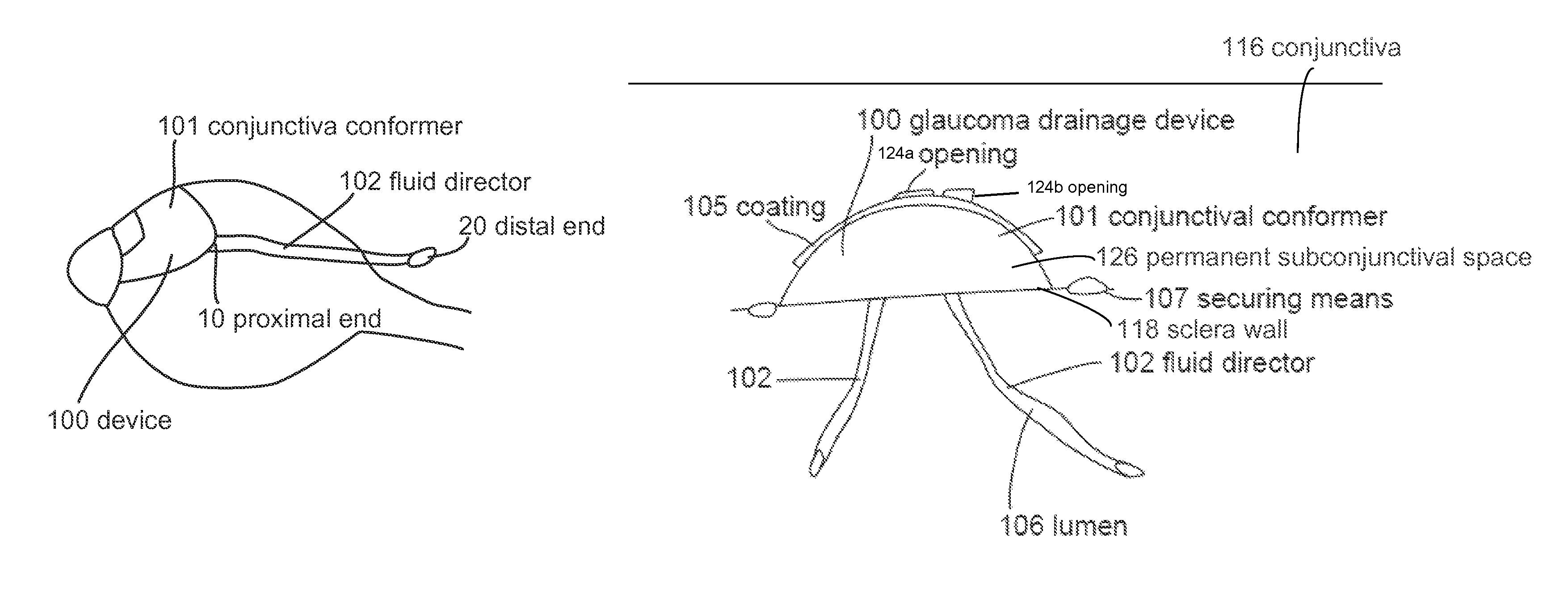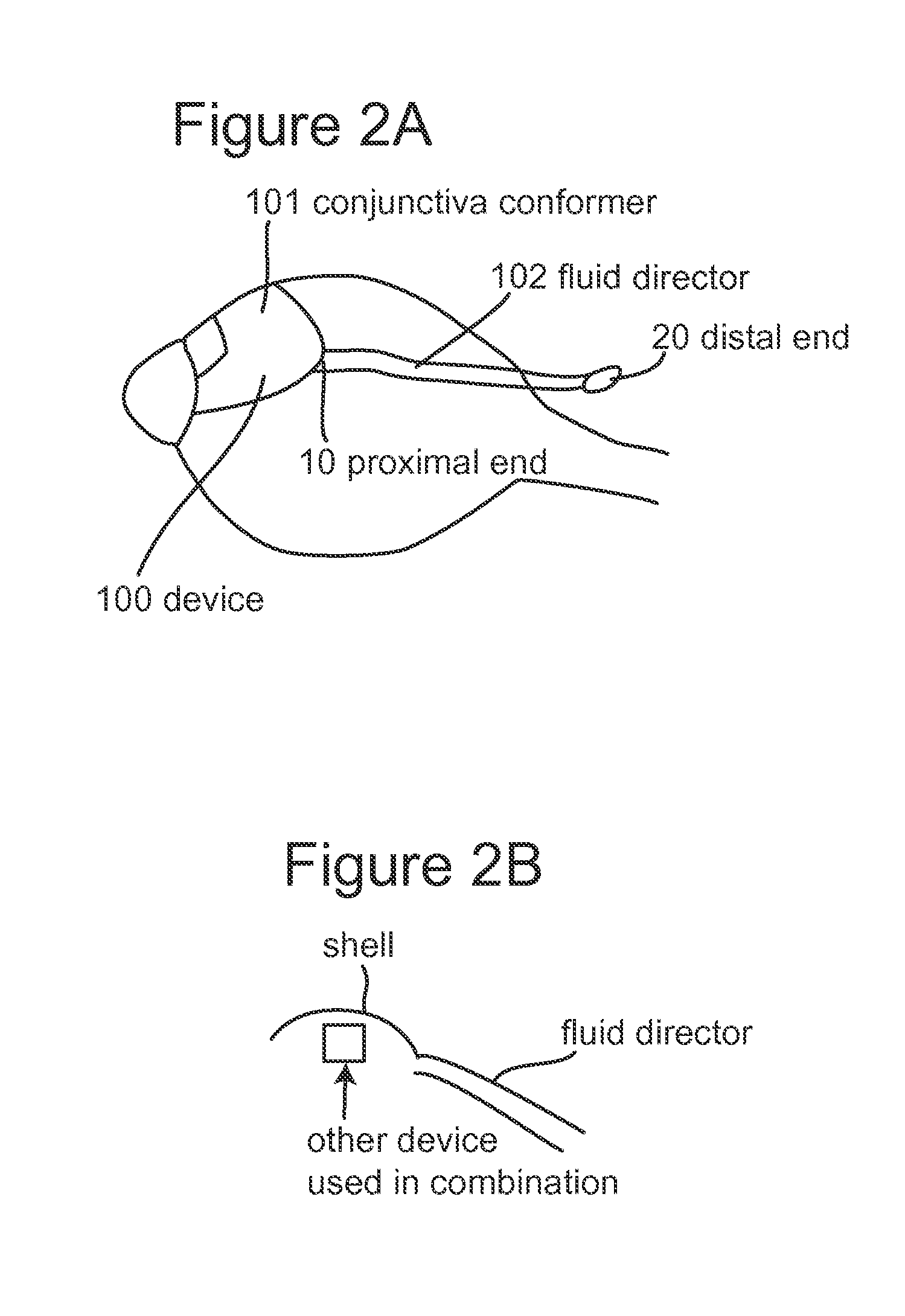Subconjunctival conformer device and uses thereof
a conformer device and subconjunctival technology, applied in intravenous devices, eye surgery, eye treatment, etc., can solve the imbalance between intraocular fluid production and outflow, blindness worldwide, and irreversible vision loss, so as to enhance and/or direct intraocular fluid flow, minimize scarring, fibrosis, inflammation, etc., to achieve the effect of enhancing and/or directing intraocular fluid flow, minimizing inflammation and scarring
- Summary
- Abstract
- Description
- Claims
- Application Information
AI Technical Summary
Benefits of technology
Problems solved by technology
Method used
Image
Examples
example
Results of Preclinical Study in Animal Eyes
Study Device
[0045]A study in 16 swine is performed using a device of the present invention. The device is implanted in one eye of each animal and the non-implanted eye serves as a control.
Surgical Procedure
[0046]For each animal, the periocular area of the study eye is prepped (eyelash trimming and betadine). The animal is then anesthesized using isofluorane. Under sterile conditions, a lid speculum is used to open the eyelids. An operating microscope is swung into place. A peripheral corneal bridle suture is placed to rotate the eye and expose the superior nasal limbus. A fornix-based conjunctival incision is made in the sclera and hemostasis ensured with bipolar cautery. A partial-thickness triangular scleral flap that measured 4×4 mm is made at the limbus and dissected anteriorly into clear cornea. A second, deeper flap is created at the base of the first flap, and dissected anteriorly to unroof the porcine equivalent of Schlemm's canal. ...
PUM
 Login to View More
Login to View More Abstract
Description
Claims
Application Information
 Login to View More
Login to View More - R&D
- Intellectual Property
- Life Sciences
- Materials
- Tech Scout
- Unparalleled Data Quality
- Higher Quality Content
- 60% Fewer Hallucinations
Browse by: Latest US Patents, China's latest patents, Technical Efficacy Thesaurus, Application Domain, Technology Topic, Popular Technical Reports.
© 2025 PatSnap. All rights reserved.Legal|Privacy policy|Modern Slavery Act Transparency Statement|Sitemap|About US| Contact US: help@patsnap.com



